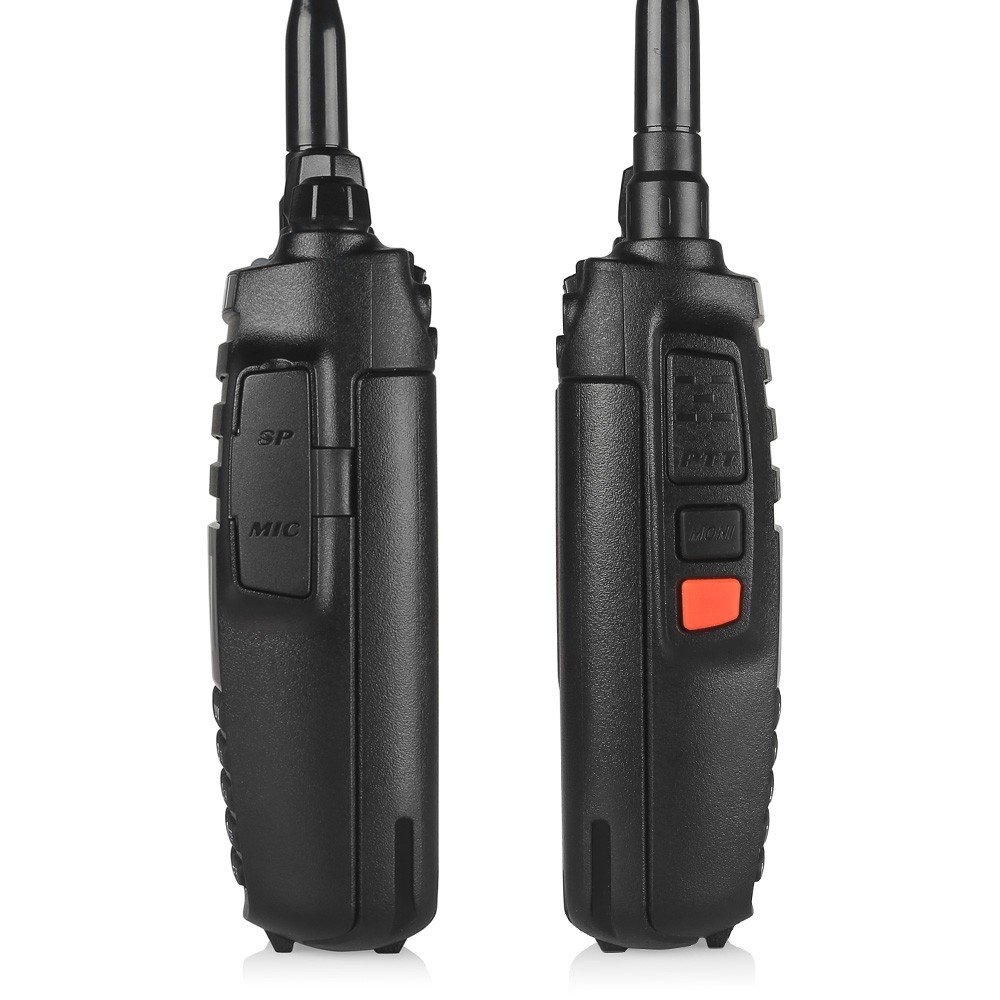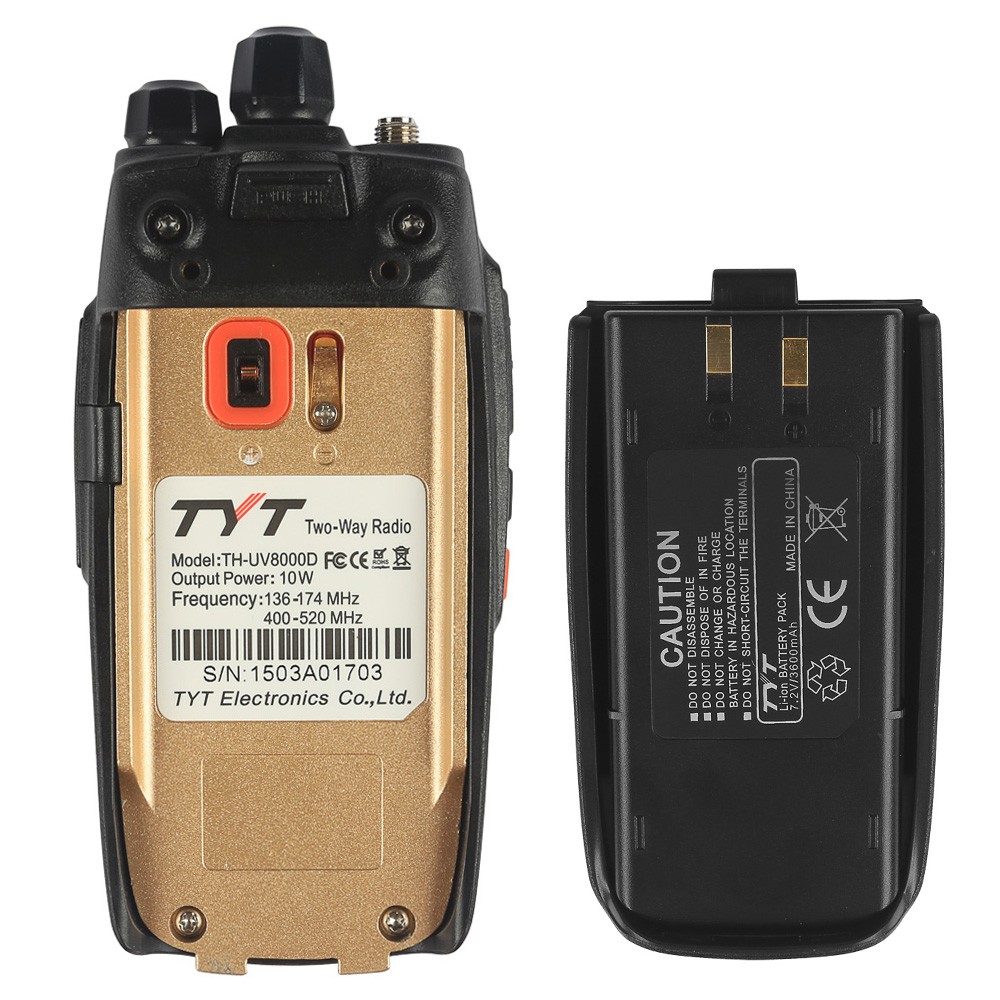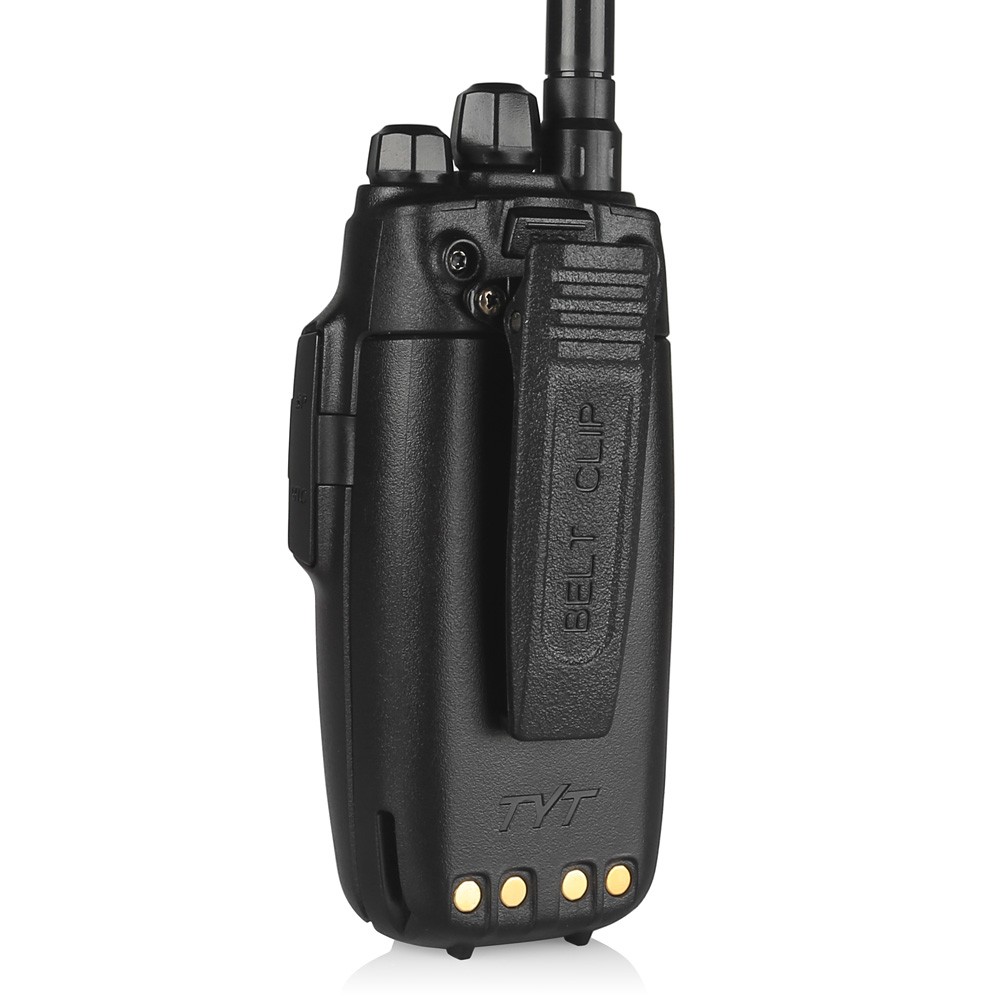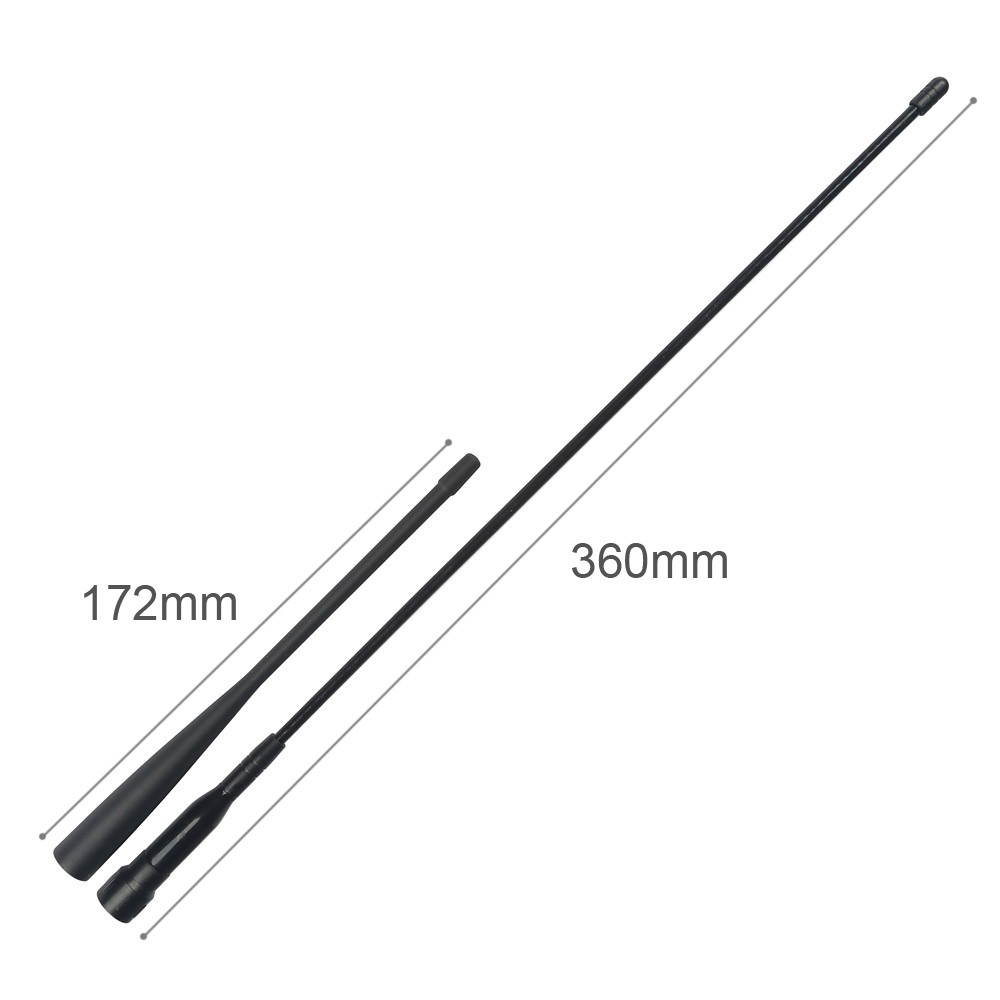Discontinued: Replaced by UV8200
TYT TH-UV8000D
The features that distinguish this analog VHF model are the rugged build, the high power output rating of 10W (when proper high gain tuned antenna is used), and the cross band repeat capability. Another feature we stumbled across is the apparent ability to tune down to 1KHz frequency steps, so we plan to test this as a telemetry receiver for animal collars.
This radio can be programmed with free factory software, or with commercial software from RT Systems. It comes with 2 light duty stock OEM antennas. For proper performance through the full range of VHF frequencies, and to avoid damage to the radio, the correct Smiley antennas should be purchased along with the radio. The testing on this can be seen in the video below (Full HD video on Youtube: Link):
Text for video:
Many reviewers of the Tytera UV8000D radio report experiencing heat issues. This is because the radio is rated as a 10W radio, and more power means more energy. Some of this extra energy goes toward making the signal stronger, but energy that gets trapped in the radio as a standing wave converts to heat instead of a waveform. The result is less signal propagation, and potential heat damage to the integrated circuits. A properly tuned antenna is critical to mitigating the magnitude of the standing wave, so we decided to look at the antennas that are supplied with the radio, and compare their performance to tuned antennas (antennas that are calibrated so that the signal that they generate is a wavelength ratio that is a targeted harmonic of the transmit frequency).
The results indicate that the stock OEM antennas can function as well as tuned antennas when the center tune point is the same. However, when you move about 5MHz or more past this point, you need to address your transmit frequency with a tuned antenna that is within 5MHz of matching it.
In the VHF universe, these radios typically straddle a range greater than 30MHz. Asking any rubber duck antenna to cover that great of a range without creating an unacceptable standing wave ratio is not possible: at least three rubber duck antennas or one telescoping field tunable metal antenna would be required to do this.
This demonstration shows when you can expect to use the OEM stock antennas that come with the radio, and when you should not. It does this by comparing Standing Wave Ratios, Forward Power, and Reflected Power characteristics of both VHF and UHF antennas over the frequency range supported by the radio.
The results show the VHF OEM antenna has an acceptable SWR around 150. (Moving more than 5MHz above or below that point is not advisable.) They also indicate that tuned antennas are better in the UHF band by supporting greater forward power and reflecting less power.
Package contents:
1 x Portable Radio
2 x Antennas (1 VHF, 1 Dual Band, 145-155/440-460 MHz)
1 x Li-ion battery pack
1 x Charger
1 x Belt clip
1 x User`s manual





.jpg)
